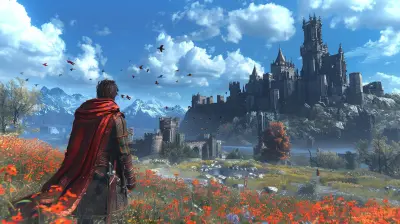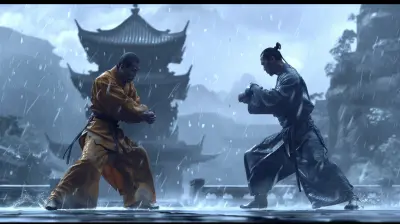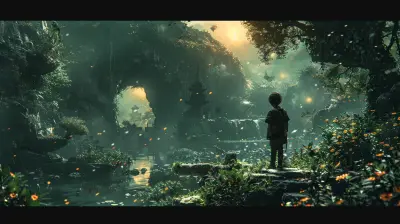The Art of Environmental Storytelling Through Graphics
2 August 2025
Let’s be honest—video game stories don’t just unfold through dialogue or cutscenes anymore. Nowadays, your surroundings are just as chatty as any character, spilling secrets with each squeaky floorboard, cracked photo frame, or graffiti-smeared wall. Yep, we’re diving deep (and I do mean deep) into environmental storytelling, and how graphics are the unsung heroes in making a virtual world feel more alive than that suspiciously looted village in your RPG.
So buckle in, grab a health potion, and let’s break down how stunning visuals and sneaky design details combine to tell stories that even your chatty NPC companions can’t top.
What the Heck Is Environmental Storytelling?
Alright, first things first—what are we on about?Environmental storytelling is fancy gamer-speak for using the game world itself to tell a story. It’s when cluttered desks, broken bridges, or the eerie silence of a once-bustling town give you more plot than a stack of exposition-heavy scrolls ever could.
And graphics? Well, they’re the lipstick, eyeliner, and mood lighting in the narrative makeup kit. Without them, you don’t get vibes—you get voids. With them, you get a rich, immersive story that whispers, "there’s something very wrong here," before any villain even shows up.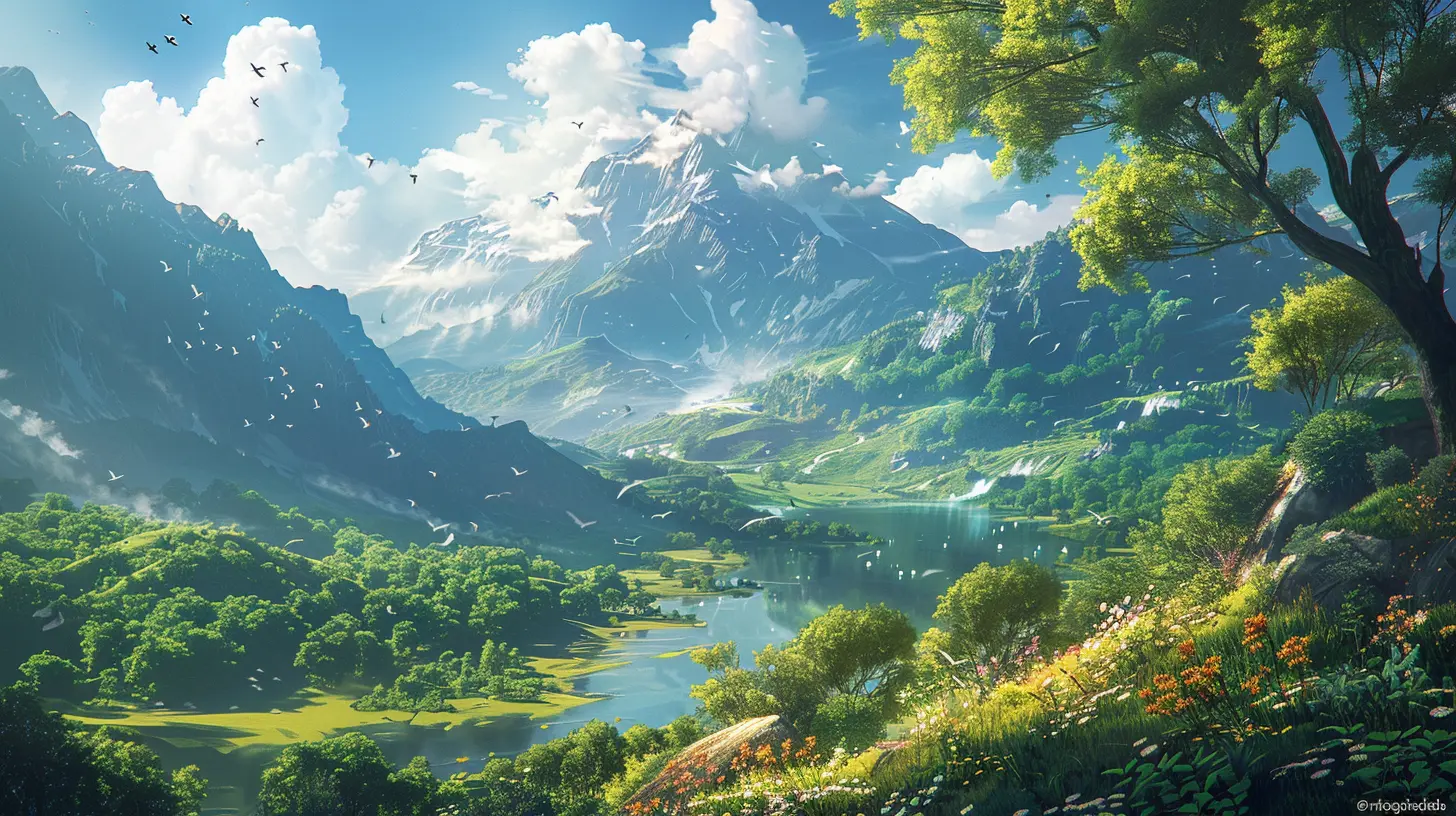
Why Environmental Storytelling Hits Different
Imagine walking into an abandoned house in a game. The furniture is overturned, plates still on the table, a dog collar on the floor, and a calendar frozen on a date from three years ago. No dialogue. No music stinger. Just...atmosphere.You feel it, right? That’s the magic.
These subtle clues give us breadcrumbs to build our own interpretations. No forced narratives. Just curiosity. Like when you’re snooping through your sibling’s room—not that I've done that (okay, maybe once). You learn a lot without anyone saying a word.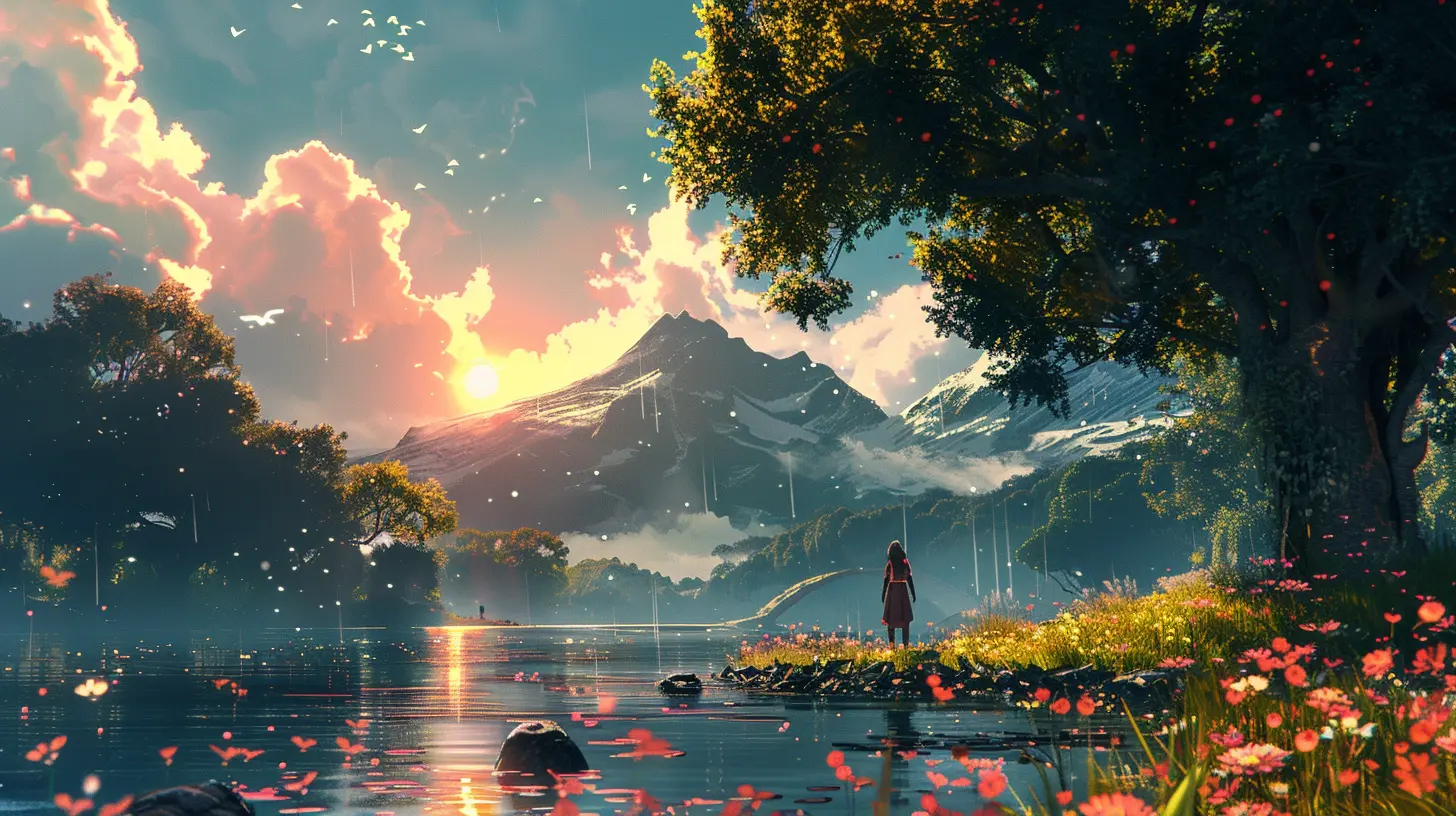
The Role of Graphics in Telling the Silent Tale
Okay, here's the meat and potatoes. Graphics are like the ultimate wingman for environmental storytelling. Without detailed visuals, all you'd have is a vague idea of what's happening. With them? You’ve got emotional gut-punches in pixel form.Let’s dig into some ways graphics carry the narrative torch:
1. Lighting Sets the Mood (Cue the Creepy Fog)
Lighting in a game is more than just “can I see where I’m going?”—it’s a full-blown mood setter.Dark corridors? Screams horror.
Golden sunsets? Warm fuzzies.
Strobe lights in a cyberpunk club? Instant rave.
Take The Last of Us. It's a masterclass in lighting. The way light filters through broken buildings and bounces off dust particles? That’s storytelling. It whispers tales of destruction, abandonment, and the tiny hope still blooming amidst the chaos.
2. Textures and Object Placement Do the Heavy Lifting
A scuffed wall could show signs of a struggle. A teddy bear in a shopping cart? Somebody was trying to hold on to innocence.It's sometimes not even about realism—it's about intention. Devs place everything for a reason. If you find a pair of boots under a bed and a missing person poster outside, chances are...yeah, you get it.
Graphics make these little stories come alive. Crisp textures, detailed models—the works. Without these, the world would feel flatter than a failed pancake flip.
3. Color Palettes Tell You How to Feel
Colors aren’t just there to look pretty. They’re basically emotional cheats.- Blues and grays? Melancholy or mystery.
- Reds and oranges? Danger’s coming.
- Neon? You’re in a cyberpunk dystopia—prepare for morally grey choices.
Games like Inside or Limbo strip color down to bare essentials to drive their bleak tales home. Others, like Firewatch, bask in vibrant oranges to paint solitude and beauty in the wilderness.
It’s like color-coded emotional manipulation—and yup, we’re here for it.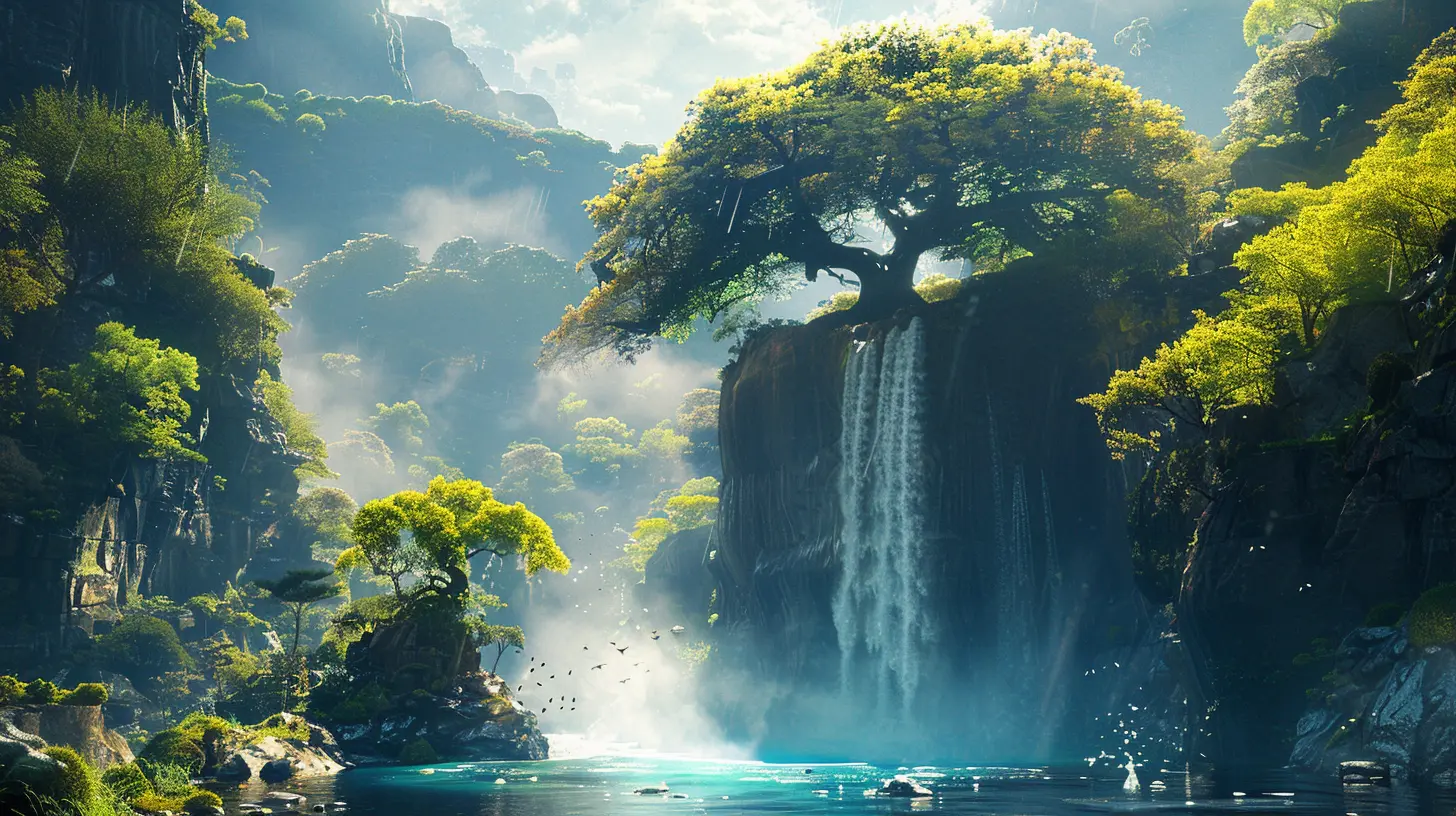
Games That Nailed Environmental Storytelling (And How)
🎮 The Last of Us (Naughty Dog)
This one’s a no-brainer. The world practically bleeds story. Every room tells a tale. Crayon drawings next to skeletons. Expedition maps surrounded by empty food cans. You piece together lives without anyone saying a word.Visual Highlights: Overgrown cities, broken buildings overtaken by flora, lighting that shifts with tone.
🎮 Bioshock (Irrational Games)
Welcome to Rapture, the undersea city with more personality than your average reality TV star.Through propaganda posters, art-deco decay, and haunting audio logs, Bioshock drip-feeds its twisted backstory. Rapture was beautiful once. Now it’s a horror show—and the graphics make sure you feel it.
Visual Highlights: Shattered glass tunnels, ruined ballrooms, flickering neon signs.
🎮 What Remains of Edith Finch (Giant Sparrow)
This one’s a heartbreaker. Each room in the Finch house is a lovingly preserved time capsule. Walls speak, items glow with memory, and gameplay shifts to match the emotions tied to each person’s story.Visual Highlights: Hyper-detailed rooms frozen in time, seamless transitions between story vignettes.
🎮 Red Dead Redemption 2 (Rockstar Games)
You know you’ve done environmental storytelling right when players spend hours just roaming around. Abandoned cabins tell tales of love and loss. Blood-stained letters. Graves hidden in forests.Visual Highlights: Realistic weather, decaying structures, NPC routines that change over time.
How Developers Craft These Storytelling Masterpieces
Let’s not pretend this all happens magically. Behind every beautiful ruin is a dev team sweating bullets to make it feel “natural.”Here’s what typically goes into it:
1. Worldbuilding Before Pixel Pushing
Before anything gets drawn, writers and artists brainstorm history. Who lived here? What happened? Why did things go so wrong?That rich lore gets baked into every texture and object. It’s basically character development, but for buildings.
2. Intentional Clutter is the Secret Sauce
Think that pile of books on the floor is random? It’s not. Everything is placed with meaning—sometimes to hint, sometimes to mislead, always to engage.It's the equivalent of “show, don’t tell” in book writing—but with digital banana peels and bullet holes.
3. Iteration, Baby
Developers spend a lot of time tweaking. Shuffling furniture around. Changing light angles. Removing things that give away too much too fast.You know how OCD you get about furniture placement in The Sims? Multiply that by 1,000, and you’ve got the polish phase of environmental storytelling.
Why Gamers Eat This Stuff Up
Let’s be real—we love snooping around in fictional worlds. Give us a drawer we can open, and we’ll rifle through it like raccoons.Why? Because discovering a story on your own hits different. It feels personal. Like the game made that moment just for you.
You feel smart. Connected. Emotional. You’re not told what to feel—you feel it, organically.
That’s powerful stuff, my friend.
Environmental Storytelling in Indie Games: The Underdog MVP
Sure, AAA titles have the budget to render photorealistic trauma, but indie games? They get clever.Take Inside—that game barely has dialogue, yet it's one of the most haunting stories around. It's all in the visuals. Shadows, pacing, weirdly aggressive pigs (trust me, it's a thing).
Indie devs use minimalism to their advantage. They tell stories through implication and leave gaps for players to mentally fill. And that, folks, sticks with you.
The Future of Environmental Storytelling (Spoiler: It’s Gonna Be Awesome)
With tech like ray tracing, AI-generated assets, and ultra-realistic physics, the future of environmental storytelling isn’t just looking good—it’s positively drool-worthy.Imagine holograms that react to your emotional state. Weather systems that change depending on what story path you’re on. Environments that literally evolve based on your choices.
We're not far off from games where you’ll be able to smell the regret in a room (okay, maybe not smell—nobody wants 4D sadness).
TL;DR: Graphics Aren’t Just Eye Candy—They’re Storytellers
So there you have it. Graphics in games aren’t just there to make things look pretty; they’re essential storytellers whispering lore into our ears through lighting, textures, color, and object placement.Whether it’s a broken-down saloon or a toy left behind in a warzone, those visual cues are doing a heck of a lot of emotional heavy lifting.
So next time you're playing a game, slow down. Look around. Because chances are, the environment has a story to tell—and it’s probably juicier than any side quest you’re ignoring.
all images in this post were generated using AI tools
Category:
Game GraphicsAuthor:

Pascal Jennings
Discussion
rate this article
1 comments
Harley McGuffin
Beautiful insights! Graphics truly enhance storytelling experiences.
August 10, 2025 at 4:13 AM

Pascal Jennings
Thank you! I'm glad you found the insights valuable. Graphics really do bring stories to life!
